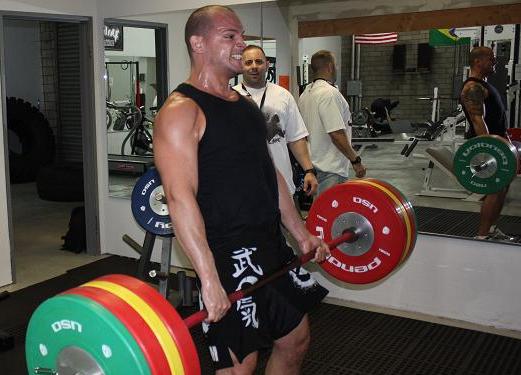By Peter Lakatos -Strength coach for Carlson Gracie Hungary & StrongFirst Master instructor
You are doing bjj, planning to compete and you just figured out, that maybe planning your trainings would help your preparation? Planning is what we all need, since random acts of variety create random results.
When athletes are getting ready for competition in strength or endurance sports, they have an annual or even longer plan, that is broken down to smaller chunks. This is where you will hear about macrocycle, mesocycle, microcycle as sporting terminology, but I don’t want to be way too technical in this post. Most people does not even plan ahead of a single day or even a training session, so if that is an issue for you, knowing what are those words really covering won’t help you. The point is, you must plan ahead, and if you have 8-12 weeks till your next competition, you can accomplish great things, if you have only 1-2 weeks, let’s hope all your preparation went really well.
Most physical preparation training ideas are coming from the direction of traditional sports, where either strength / power or endurance is the main goal. So, the one end of the line you can put powerlifting/weightlifting /sprinting and the other extreme end in this case let’s say thriatlon/marathon for it’s endurance goals. Planning their preparation is different from wrestling / MMA / boxing / BJJ, since in our sport we must be fairly strong and powerfull, we must have great endurance, and we have huge amount of skill to learn or master, not even talking about the tactics. So our sport is very complex, and simply applying strength and / or conditioning as a strength or endurance athlete would do will simply overtrain us, and take most our energy away from our major component of preparation, Brazilian Jiu Jitsu.

There is a long time debate on what is the best approach, training all components of our sport, or identifying biomotor abilities that we can train in sequences – or something in the middle. We just opened up Pandora’s box on the unsolved question – what is better, parallel or sequencial periodisation, – or even concurrent or block method – and the most intelligent answer as always – it depends.
While I was searching for the best model – which does not exist, since we are different – , I was watching my 13 year old son getting ready for his elementary school exams, and I got the answer, or at least one answer. There is no clear answer. Sometimes you only go for one goal, and sure enough, other skills will not be practiced, and as we say, use it or lose it. Sometimes you study things parallel, but in that case you have no enought time and even brain capacity for everything, so you either add extra time to be better in everyting, or you will not really get better in everything after a certain limit. And naturally you can play with the two options, have clear goals, but not dropping everything else, just limit time / energy you spend on other things, while the you can focus on something important, and when you done, drip this a while for other things.
Sorry for being not so exact on this part of the post, but what I am trying to explain here is not clear sport science, but rather training philosophy, what is not hard science.
Why did I write all of these above? Because when you have a goal to compete, everything must serve this major goal. If you have 8-12 weeks, you have time to measure what is needed. Understanding you need more strength, flexibility, power and strength endurance is great, but which one you need the most? Which one would improve your game the most, in other words, what is the biggest bang for the buck? How could you fit any of them into your program, without dropping other abilities? Where are the baselines, where you say a certain strength level is enough, and you can add conditioning components? Should you condition with sport specific drills or not? Does it have any transfer?
Don’t forget – any complementary training you do has to serve two purposes: performance enhancement and injury prevention. Yes, in the same time – since it makes no sense to improre your skills and break you.
Now my goal was not really give you all the answers – but start making you think about these questions and answers since you the athlete are not only the subject of the training process, but up to a certain point should understand the process as well.
By Peter Lakatos -Strength coach for Carlson Gracie Hungary & StrongFirst Master instructor

















